THIS WEEK: DC’s first post-Doomsday Clock Watchmen spin-off, Tom King and Jorge Fornés’s Black Label Rorschach series, is finally here. Does the end justify the means?
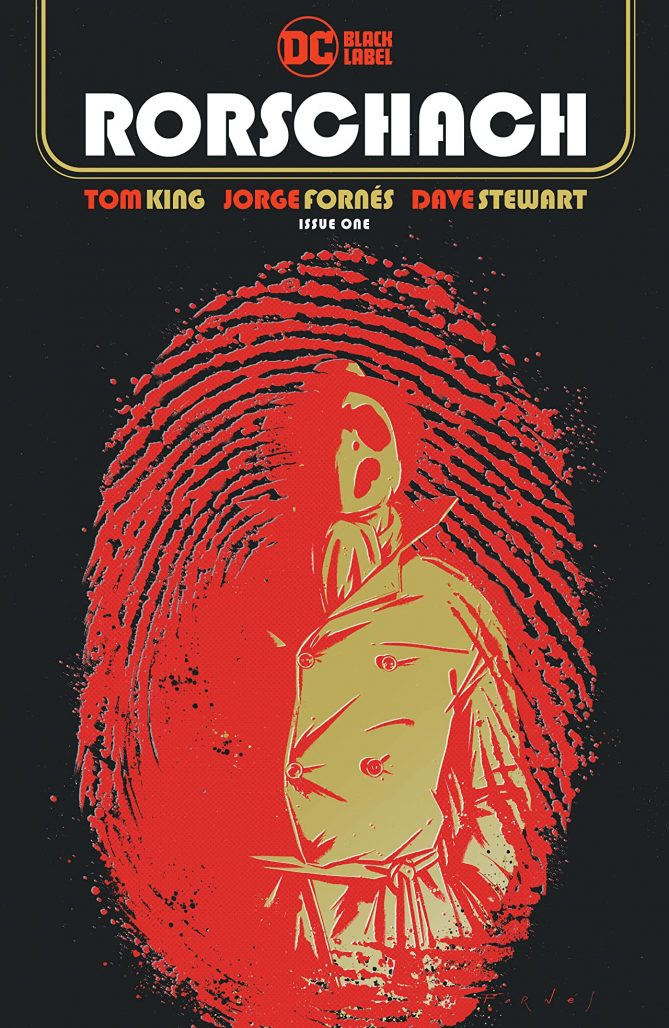
Rorschach #1
Writer: Tom King
Artist: Jorge Fornés
Color Artist: Dave Stewart
Letterer: Clayton Cowles
Cover Artist: Jorge Fornés
There’s a lot about DC’s new Black Label Rorschach series that’s divisive before you even open the first issue. There’s the continued use by DC of characters from Alan Moore and Dave Gibbons’s seminal Watchmen series, and the controversy surrounding the deal Moore and Gibbons signed when they originally worked on the series. There’s the character of Rorschach himself, a brutally uncompromising objectivist who, for whatever reason — maybe it’s his actions in Watchmen the comic, or his presentation in 2009’s Watchmen film, or the iconic design of the character by Gibbons, or maybe it’s something else entirely — has developed a fervent following and equally fervent criticism. And there’s Tom King, writer of the series, with his own set of fans and detractors based on both previous work like Batman, Mister Miracle, and Heroes in Crisis, as well as a social media dust-up between he and variant cover artist Jae Lee.
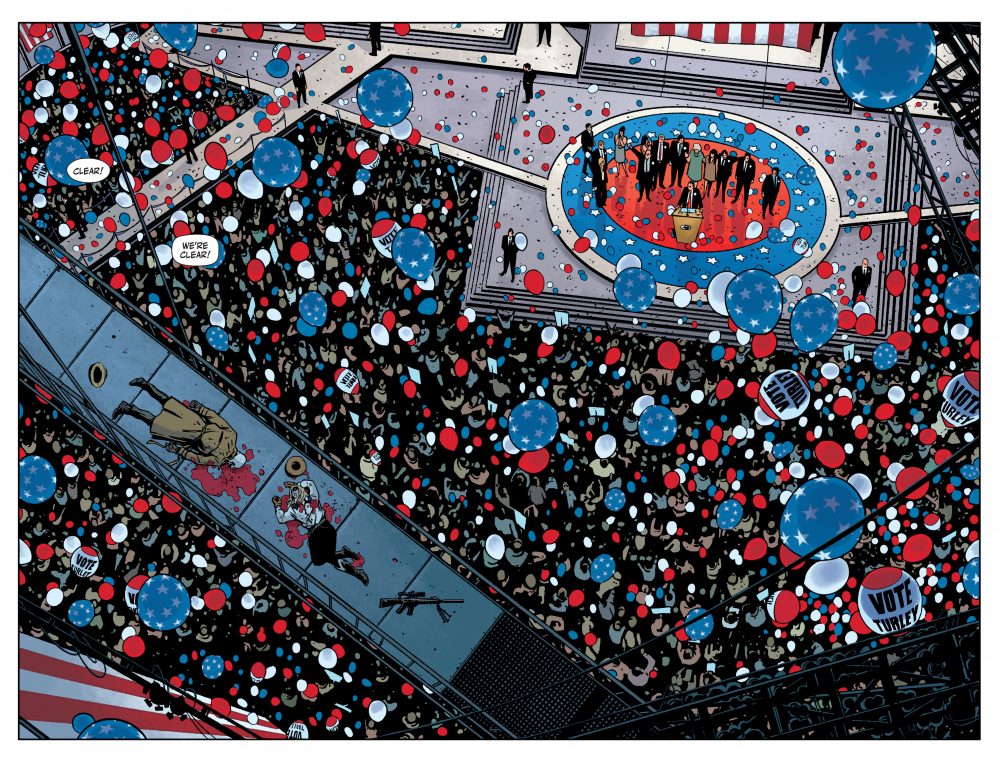
With Rorschach #1 finally here, the question becomes how well one is able to divorce all of that from the actual comic. Is it a good comic? Is it entertaining? As the first issue of a series, Rorschach #1 is burdened with doing a lot of heavy lifting. The issue follows an unnamed protagonist as he investigates the attempted assassination of a conservative presidential candidate. Not much information is given about our lead character; he’s brought in by the candidate’s campaign to conduct what appears to be an independent investigation, and at one point he’s referred to as ‘detective,’ so it’s likely he’s a P.I. Beyond that, he’s a fairly blank slate at this point. Perhaps the lack of a name and other information is intended to allow readers to project onto him whatever they want to see (like a Rorschach test?), or perhaps more will be revealed about him as the series progresses.
As for the story itself, it seems like a fairly straight-forward procedural to start. The lead character (who, as drawn by Jorge Fornés, reminds this reader of the fan-casting of Mark Ruffalo as Columbo, so I’ve been calling him ‘Frank’ in my head) interviews witnesses and pieces together the sequence of events on the evening of the crime. The two would-be assassins, one of whom was decked out in a Rorschach costume, are identified, and the question turns to why they did it.
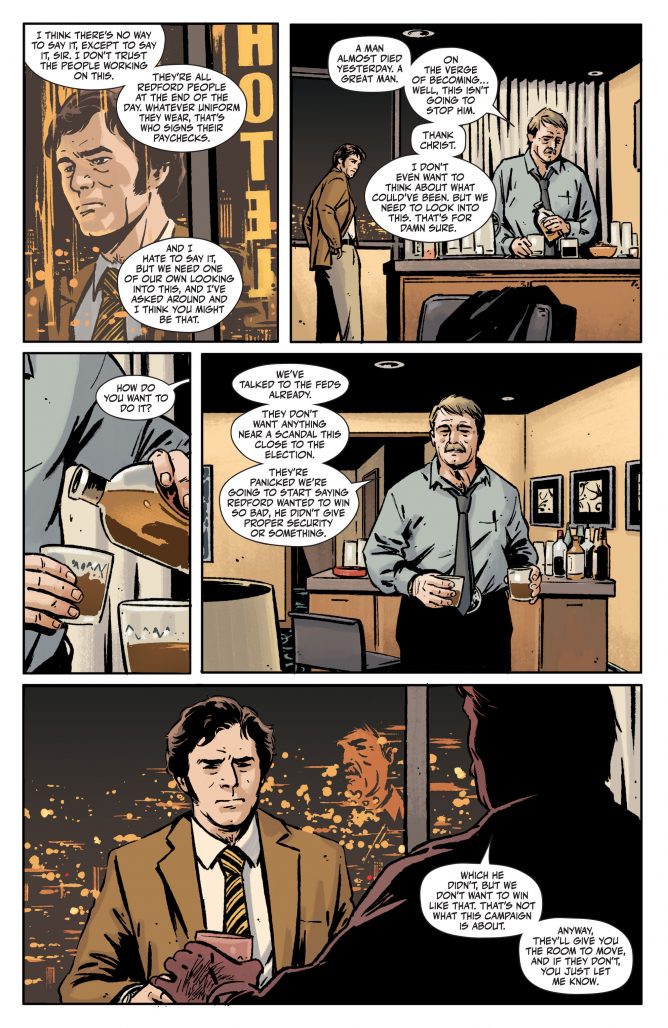
Of course, it’s the first issue, so things take a strange turn relatively quickly, and between the identify of the male assassin, the person his fingerprints match, and the decades-old recording of a seance that he was carrying, readers are left with plenty of questions as the issue ends. The recording in particular is somewhat baffling, as it appears to be based on a real, three-hour recording of a seance made by legendary writer Otto Binder, and featuring a sixteen-year-old Frank Miller. What significance this real-world connection has, if any, is anybody’s guess, but given the length of the recording it may be something that’s returned to throughout the series.
Perhaps the most surprising thing about the first issue of Rorschach is what it’s not. With series after series written by King relying heavily on the nine-panel grid page layout, it’s reasonable to have expected that Rorschach would follow suit, especially given how famous Watchmen’s use of the layout is. Previous Watchmen follow-ups have all more or less aped the visual style of the original series, to varying degrees of success. It’s refreshing, then, that King and Fornés don’t follow suit. There are a few twelve-panel grids, sure, and even a fifteen-panel grid at one point, but the nine-panel grid is nowhere to be found here.
Fornés’s work on books like Batman and Daredevil has shown that he’s an incredibly strong artist, and his storytelling skills are on full display in this issue. A particular flashback scene in which a group of security guards encounter the Rorschach-dressed assassin is exceptionally visually executed, and makes the ultimate reveal of the killer all the more startling. Colorist Dave Stewart also does a masterful job, particularly in alternating between flashback and present-day. That the aforementioned flashback featuring the security guards doesn’t switch color palettes like the other flashbacks do makes the scene all the more immediately visceral.
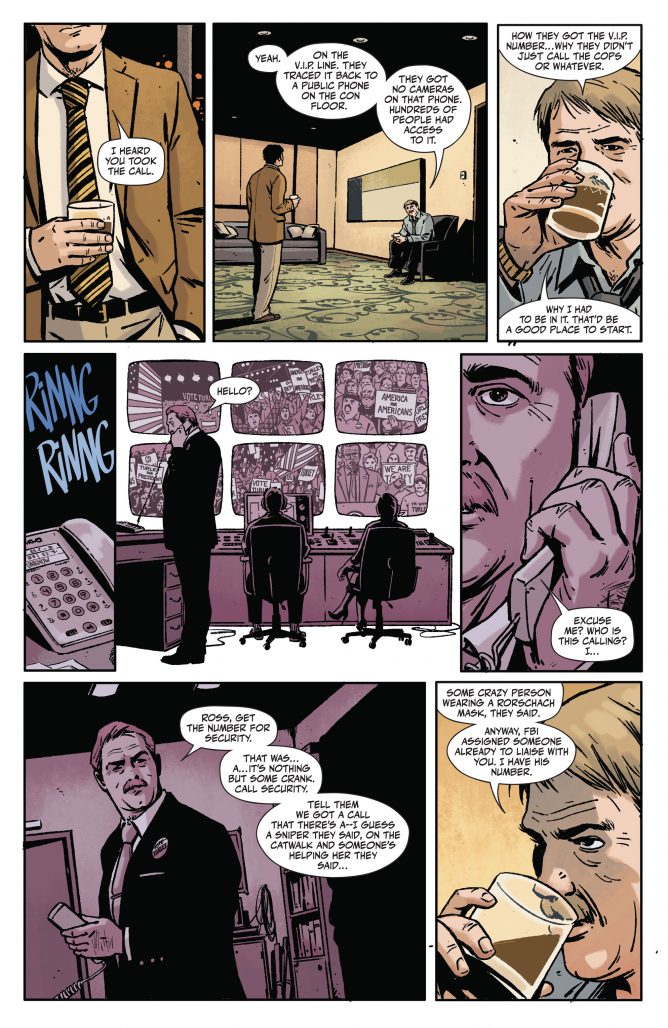
Rorschach #1 presents a compelling mystery story told in an interesting manner, with excellent artwork and enough questions that readers’ interest will likely be piqued. For me, the biggest outstanding question is one that’s not presented in the issue, but by its very existence: why? Why does this series exist as it does, save to further utilize valuable and recognizable IP? Aside from the assassin wearing a Rorschach mask, there’s ultimately very little in Rorschach #1 to connect it to Watchmen. It feels like this story could have been told with any character and it would have been just as effective. If the cliffhanger of the issue is any indication, the Watchmen connection will make itself clearer as the series continues. As it stands right now, though, the series looks like it will rely more on its own story than on that of its predecessor. In that way, Rorschach may be the most revolutionary Watchmen spin-off comic yet.
Final Verdict: Browse.
Round-Up
- After a month off, Scott Snyder, Greg Capullo, and Jonathan Glapion‘s Dark Nights: Death Metal #4 picks up the story threads from the three one-shots that filled the gap in the series. With the trinity facing defeat on the Dark Multiverse Crisis worlds (you just gotta roll with this stuff), Wonder Woman again rises to the occasion, continuing to shine as the center of this storyline. This series has been suitably bonkers, and the issue’s cliffhanger promises even more dire circumstances for our heroes. I look forward to whatever insane plan they come up with to save the day.
- The latest seasonal anthology is here with the DC: The Doomed and The Damned one-shot. Anthologies are always something of a mixed bag, but the assortment of characters featured here is enjoyably eclectic, and the stories are consistently entertaining. I never knew I needed a team-up between Aquaman and Frankenstein before this book, but here we are.
- The Flash #763 debuts the new creative team of Kevin Shinick, Clayton Henry, and Marcelo Maiolo with a standalone story featuring classic rogue The Trickster. The story has a very Silver Age feel to it in the best way possible, and Henry and Maiolo’s artwork pops off the page with slick lines and abundant energy. This team is off to a solid start.
Miss any of our earlier reviews? Check out our full archive!


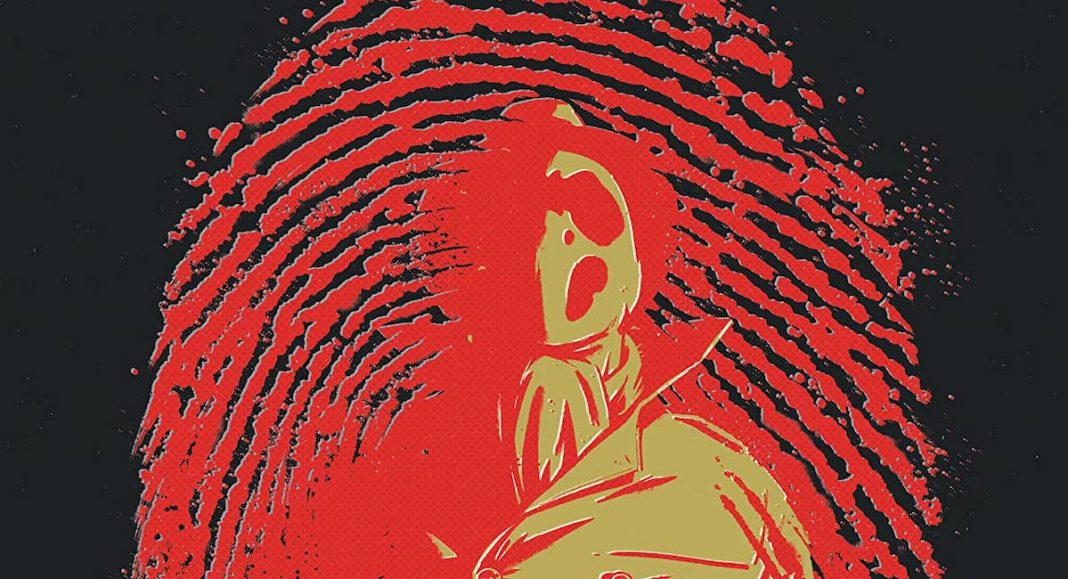
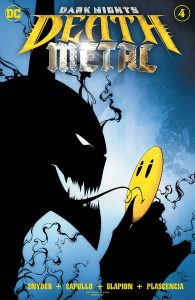

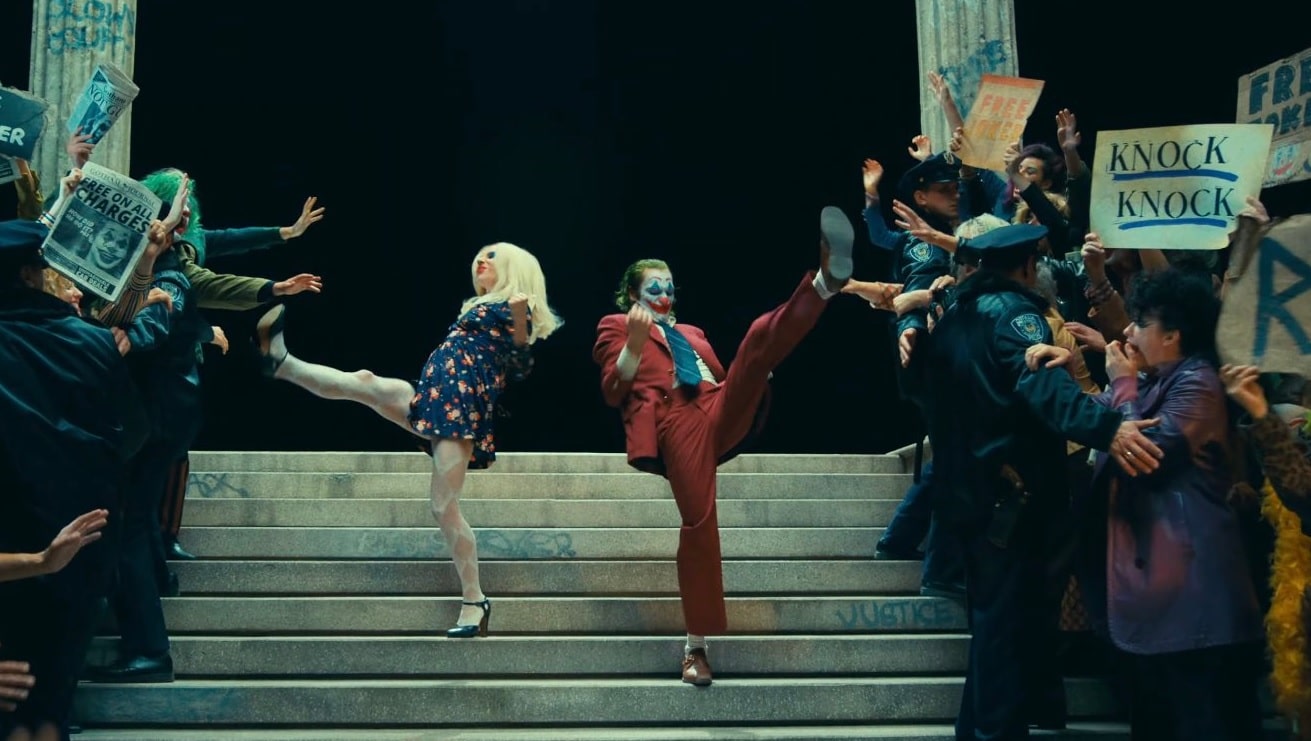

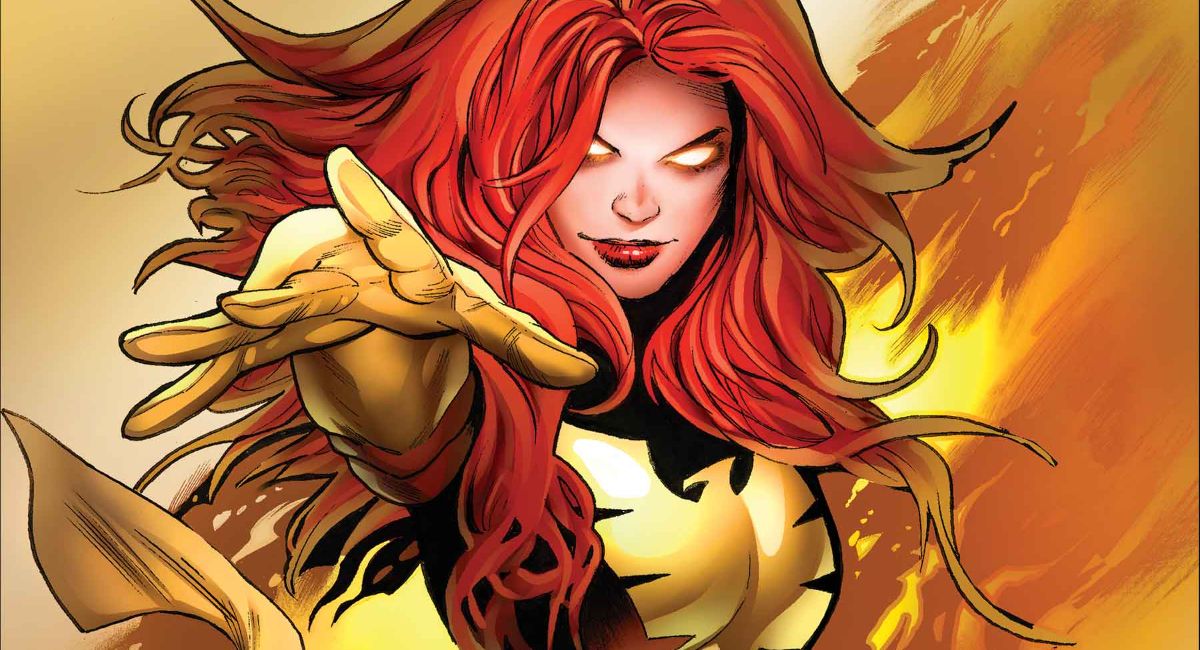


I felt like Rorschach is, in part, a tribute to 70s political thrillers. Everything from the design of the book, the primary technologies used (even though it’s set in 2020), and even the haircuts have that vibe. Heck, the opening felt like a tribute to the end of The Parallax View.
Watch the unnamed protagonist be named – Frank Dreiberg
Comments are closed.